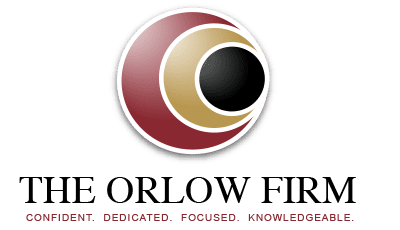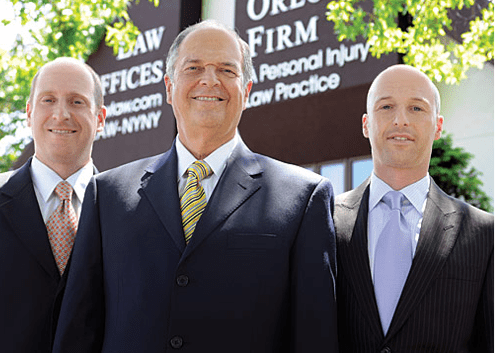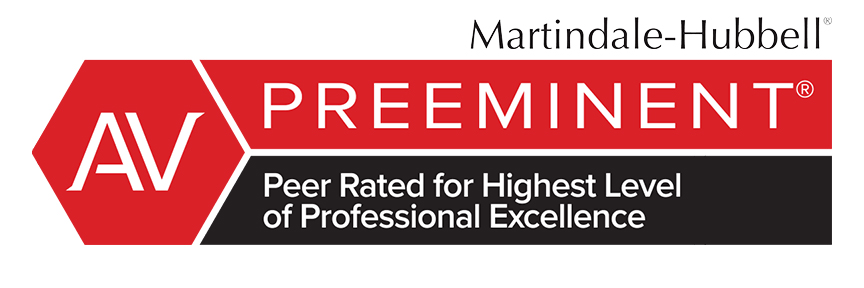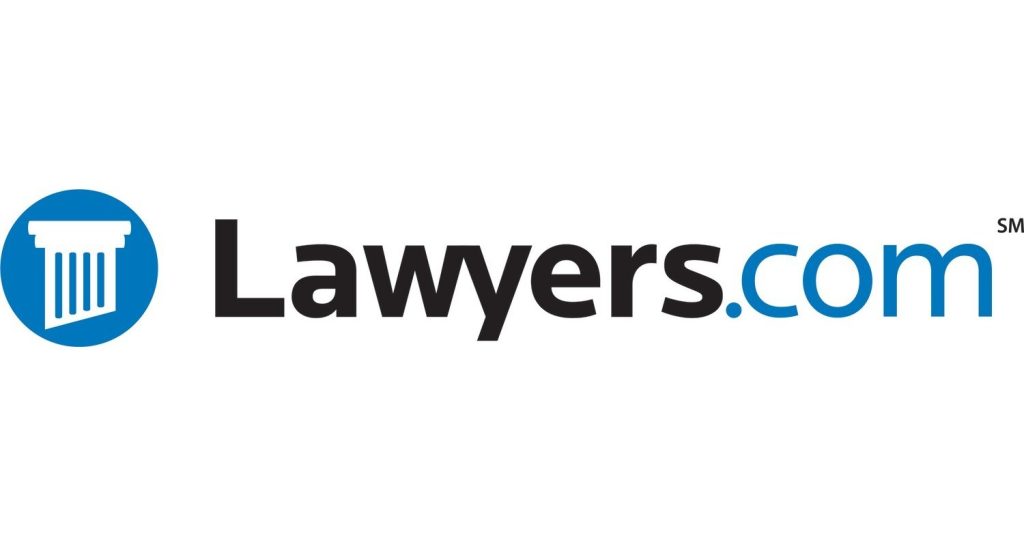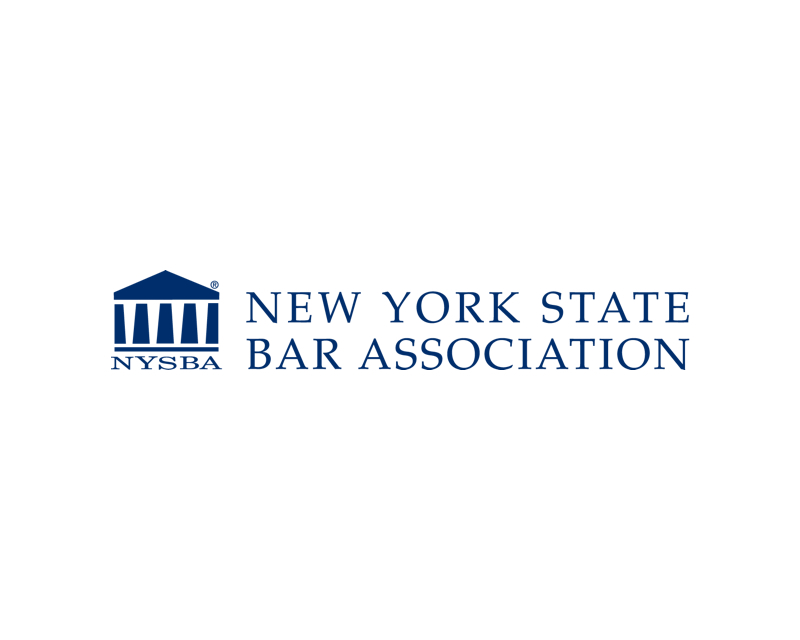What is Regulatory Non-Compliance in Personal Injury Cases?
Quick Answer: Regulatory non-compliance in personal injury cases means failing to follow safety rules or laws set by government agencies. In New York City, this failure can help show who is responsible for causing an injury. It often plays a key role in proving negligence in these cases.
Why Regulatory Compliance Matters in Personal Injury Claims
Regulatory compliance plays a crucial role in personal injury claims, especially in a complex city like New York. When businesses, property owners, or employers follow all safety rules and regulations, they help prevent accidents and injuries. On the other hand, failing to comply with these rules—known as regulatory non-compliance—can be a key factor in causing harm.
Here are some reasons why regulatory compliance matters in personal injury claims:
- Establishing Fault: Compliance with safety laws helps show that the responsible party took reasonable care to prevent injuries. Non-compliance can be strong evidence that they were negligent or careless.
- Protecting Public Safety: Many regulations exist to protect people from harm. When these rules are ignored, the risk of accidents increases, such as unsafe building conditions or hazardous workplaces.
- Legal Standards: Courts and insurance companies often look at whether the responsible party followed applicable laws and codes. Failure to meet these standards can support a claim for damages.
- Impact on Compensation: If regulatory non-compliance contributed to an injury, it may strengthen a personal injury case and influence the amount of compensation awarded.
For example, in New York City, building owners must comply with strict fire safety and maintenance codes. If a landlord ignores these rules and a tenant is hurt due to unsafe conditions, regulatory non-compliance may be a key part of the tenant’s injury claim.
Similarly, employers must follow workplace safety regulations set by agencies like OSHA (Occupational Safety and Health Administration). If an employee is injured because their employer failed to follow these rules, this violation can support a personal injury claim.
Understanding regulatory compliance helps injured individuals and their families know why certain rules exist and how breaking them can affect injury cases. It also highlights the importance of holding negligent parties accountable for failing to meet legal safety standards.
If you suspect regulatory non-compliance played a role in your injury, it is important to discuss your case with a personal injury attorney who understands how these rules apply in New York City. For help and guidance, you can contact The Orlow Firm at (646) 647-3398.
Common Examples of Regulatory Non-Compliance in NYC Personal Injury Cases
Regulatory non-compliance in personal injury cases often involves a failure to follow safety rules or laws designed to protect people. In New York City, there are several common examples where businesses, property owners, or individuals may not meet these legal requirements. Such failures can lead to accidents and injuries, forming the basis of a personal injury claim.
- Building and Construction Safety Violations: NYC has strict rules for construction sites, including proper scaffolding, barriers, and safety gear. If a construction company ignores these rules, workers or passersby can get hurt. For example, a missing guardrail on scaffolding or failure to secure tools can cause falls or falling object injuries.
- Fire Safety Code Violations: Property owners must follow fire safety laws, such as maintaining working smoke detectors, clear emergency exits, and fire extinguishers. Non-compliance can lead to fires causing injury or even death. For instance, blocked fire exits in an apartment building can trap residents during an emergency.
- Vehicle Safety and Traffic Law Violations: Drivers and companies must follow traffic laws and vehicle regulations. Failure to maintain safe brakes, tires, or lights, or ignoring traffic signals, can cause accidents. Commercial vehicles in NYC have specific regulatory requirements, and non-compliance can increase accident risks.
- Health and Sanitation Regulations: Restaurants and public places must meet health codes to prevent hazards. Ignoring these rules can result in slips, falls, or food-related illnesses. For example, failing to clean up spills or maintain safe walkways can cause customers to slip and get injured.
- Workplace Safety Violations: Employers in NYC must follow rules set by agencies like OSHA (Occupational Safety and Health Administration). This includes providing safe equipment and training. If an employer fails to comply, employees may suffer injuries from unsafe machines or hazardous conditions.
- Elevator and Escalator Safety Failures: NYC requires regular inspections and maintenance of elevators and escalators. Neglecting these duties can cause mechanical failures leading to injuries, such as falls or entrapment.
- Slip and Fall Hazards on Public or Private Property: Property owners must keep sidewalks, stairs, and floors safe and free from hazards. Failure to fix broken steps, remove ice, or warn about wet floors can lead to dangerous falls.
These examples show how breaking safety rules or ignoring regulations in New York City can cause accidents and injuries. If you believe your injury was caused by regulatory non-compliance, it is important to understand which rules may have been broken and how they relate to your case.
If you have questions or need help understanding how regulatory violations might affect your personal injury claim, please contact The Orlow Firm at (646) 647-3398 for a discussion about your situation.
How Regulatory Violations Can Affect Your Injury Case Outcome
Regulatory violations can have a significant impact on the outcome of your personal injury case in New York City. When a party fails to follow safety rules or laws set by government agencies, this non-compliance can serve as strong evidence that they were negligent and responsible for your injuries.
Here are some ways regulatory violations can affect your case:
- Establishing Fault or Negligence: If the other party broke a safety rule or regulation, such as building codes or workplace safety laws, it can help prove they were careless. This makes it easier to show they caused your injury.
- Stronger Legal Claim: Courts and insurance companies often view violations of regulations as clear signs of wrongdoing. This can strengthen your claim and improve your chances of receiving compensation.
- Impact on Damages: Regulatory violations may support claims for higher damages. For example, if a business ignored fire safety laws and you were injured in a fire, you might recover more money for medical bills, pain, and suffering.
- Potential for Punitive Damages: In some cases, if the violation is especially serious or reckless, the court may award punitive damages. These are intended to punish the wrongdoer and discourage similar conduct.
- Insurance Company Response: Insurance companies may be less willing to settle quickly or fairly if the defendant clearly violated regulations. Your lawyer can use this to negotiate better settlements or prepare for trial.
For example, in New York City, property owners must comply with local building codes and safety regulations. If a landlord fails to fix a broken handrail or ignores fire escape requirements, and you get hurt as a result, this regulatory non-compliance can strongly support your injury claim.
However, it is important to know that not all regulatory violations automatically guarantee a win. The violation must be directly connected to your injury. Your legal team will need to prove that the breach of regulation caused or contributed to the accident.
In summary, regulatory violations can play a critical role in shaping your personal injury case. They can help prove fault, increase compensation, and sometimes lead to additional damages. If you believe your injury was caused by someone not following safety laws or regulations, it is important to discuss this with a personal injury attorney who understands New York City’s rules and how to use them to support your case.
If you have questions about regulatory non-compliance in your injury case, please contact The Orlow Firm at (646) 647-3398 for a consultation.
Understanding New York City Laws Related to Regulatory Compliance
New York City has many laws and rules designed to keep people safe. These laws cover things like building safety, workplace rules, traffic regulations, and public health standards. When someone is hurt because these laws were not followed, it may be called regulatory non-compliance. Understanding these local laws is important in personal injury cases.
Here are some key points about New York City laws related to regulatory compliance:
- Building and Safety Codes: NYC enforces strict building codes to protect people from unsafe structures. Owners and contractors must follow these rules when constructing or maintaining buildings. Failure to meet these codes can lead to accidents, such as falls or collapses.
- Workplace Safety Regulations: The city follows rules set by agencies like OSHA (Occupational Safety and Health Administration). Employers must maintain safe workplaces. If they ignore these rules, workers may get injured due to unsafe conditions.
- Traffic and Vehicle Laws: NYC has traffic laws to protect drivers, pedestrians, and cyclists. These include speed limits, signal requirements, and rules for commercial vehicles. Violations can cause accidents leading to injuries.
- Health and Sanitation Rules: Restaurants, public spaces, and businesses must follow health standards to prevent hazards. Non-compliance can cause injuries or illnesses, such as food poisoning or slips due to unsanitary floors.
Regulatory compliance means following these laws and rules closely. When a person or company fails to comply, it can be considered negligence in a personal injury case. For example, if a building owner ignores a city order to fix a broken stairway and someone falls, that failure to comply with safety regulations can support a claim for injury.
In New York City, various government agencies enforce these regulations, such as the Department of Buildings, the Department of Health, and the Department of Transportation. Their inspections and reports can provide important evidence in personal injury cases involving regulatory non-compliance.
Understanding these local laws helps injured persons and their families recognize when regulatory violations may have caused harm. It also guides them on how to gather evidence and build a stronger personal injury claim based on these violations.
The Role of Government Agencies in Enforcing Safety Regulations
Government agencies play a key role in making sure safety rules are followed to protect people from harm. In New York City, several agencies enforce these regulations to help prevent accidents and injuries. When these rules are not followed—known as regulatory non-compliance—it can lead to personal injury cases.
These agencies create and monitor safety standards for workplaces, buildings, transportation, and public spaces. Some of the important agencies involved include:
- New York City Department of Buildings (DOB): This agency oversees construction codes and building safety. They inspect construction sites, issue permits, and ensure buildings meet safety requirements. Violations like faulty scaffolding or lack of proper safety gear can cause injuries and may be cited by DOB inspectors.
- New York State Department of Labor (DOL): The DOL enforces workplace safety laws. They investigate accidents at job sites and ensure employers follow rules to protect workers. Failure to comply with these regulations can lead to serious injuries and legal claims.
- New York City Department of Transportation (DOT): The DOT manages safety on city streets and highways. They regulate traffic signals, road signs, and pedestrian crossings. Sometimes, accidents happen because these safety measures are not properly maintained or followed.
- Occupational Safety and Health Administration (OSHA): Although a federal agency, OSHA works closely with New York agencies to enforce workplace safety standards. They investigate unsafe work conditions and can issue fines or orders to fix hazards.
These agencies conduct inspections, investigate complaints, and issue fines or violations when safety laws are broken. Their reports and findings can be important evidence in personal injury cases. For example, if an injury occurs due to a building code violation documented by the DOB, this information can help prove that regulatory non-compliance caused the harm.
It’s also important to know that government agencies do not resolve personal injury claims themselves. Instead, they focus on enforcing laws and preventing future accidents. Victims may still need to hire a personal injury lawyer to pursue compensation through the courts.
In New York City, government enforcement of safety regulations helps protect residents and workers. When these rules are ignored, it can create dangerous conditions leading to injuries. Understanding the role of these agencies can help injured individuals recognize how regulatory non-compliance may support their personal injury claims.
If you believe that a government agency’s report or violation relates to your injury case, consider speaking with a personal injury attorney. They can help explain how this information might affect your claim and what steps to take next. For assistance, you can contact The Orlow Firm at (646) 647-3398.
Proving Regulatory Non-Compliance in a Personal Injury Lawsuit
To prove regulatory non-compliance in a personal injury lawsuit, you must show that the responsible party failed to follow specific laws or safety rules designed to prevent injuries. These rules, called regulations, come from government agencies and cover many areas like building safety, workplace standards, or vehicle maintenance. In New York City, these regulations are often detailed and strictly enforced.
Here are the key steps involved in proving regulatory non-compliance in your case:
- Identify the Relevant Regulations: Determine which laws or safety rules apply to your injury. For example, if you were injured in a construction accident, regulations from the New York City Department of Buildings or Occupational Safety and Health Administration (OSHA) may apply.
- Gather Evidence of Violation: Collect proof that the responsible party did not follow these rules. This can include:
- Inspection reports showing code violations
- Photographs or videos of unsafe conditions
- Witness statements describing the unsafe acts or conditions
- Official citations or fines from government agencies
- Expert testimony explaining how the regulations were violated
- Show That the Violation Caused Your Injury: It is not enough to prove a rule was broken; you must also connect that violation directly to your injury. For example, if a building owner ignored safety codes and that caused a fall, you need to show this link clearly.
- Use Expert Witnesses: Experts like safety inspectors, engineers, or medical professionals can explain complicated regulations and how the violation led to your harm. Their testimony can be important in court, especially for technical rules.
- Document Your Injuries and Damages: Provide medical records and bills to show the harm you suffered. This supports your claim that the regulatory non-compliance resulted in real injury and expenses.
In New York City, local laws and codes often add another layer of rules that must be followed. For example, the NYC Building Code or Fire Code includes safety standards that property owners must meet. Failure to comply with these can strengthen your case if those violations caused your injury.
Remember, proving regulatory non-compliance can help establish negligence. Negligence means someone failed to act with reasonable care, leading to your injury. When regulations exist for safety, breaking them is often strong evidence that the responsible party was negligent.
If you believe regulatory non-compliance played a role in your injury, gathering detailed evidence early is important. This helps build a clear case to support your claim for compensation.
If you have questions about how to prove regulatory non-compliance in your personal injury case, you may want to discuss your situation with a personal injury attorney who understands New York City laws and regulations. For assistance, you can call The Orlow Firm at (646) 647-3398.
Legal Challenges When Dealing with Regulatory Non-Compliance
Dealing with regulatory non-compliance in personal injury cases can present several legal challenges. These challenges often make it harder for injured parties to prove fault and secure fair compensation in New York City.
1. Proving the Violation Occurred
One of the first challenges is showing that a specific regulation was actually violated. Regulations can be complex and technical, and it may require expert testimony or detailed investigation to confirm non-compliance. For example, if a building owner failed to follow NYC safety codes, you must gather clear evidence of that failure.
2. Linking the Violation to the Injury
Even if a regulation was broken, you must prove that this violation directly caused your injury. This connection can be difficult because other factors may have contributed to the accident. Courts require a clear link between the regulatory breach and the harm suffered.
3. Navigating Multiple Regulations
In NYC, many safety regulations come from different agencies, such as the Department of Buildings or the Department of Health. Sometimes, several rules apply to the same situation, making it complex to identify which specific violation is most relevant to your case.
4. Overcoming Defendants’ Arguments
Defendants often argue that they complied with regulations or that any violation was minor and unrelated to the injury. They may also claim that the injured party was partly responsible. These defenses can complicate proving fault and require careful legal strategy.
5. Dealing with Government Immunity
In cases involving public entities or government agencies, there may be legal protections known as sovereign immunity. This can limit your ability to sue or recover damages, depending on the circumstances and specific laws in NYC.
6. Meeting Strict Filing Deadlines
Personal injury cases involving regulatory non-compliance often have strict time limits to file claims. Missing these deadlines, known as statutes of limitations, can bar your case entirely. It is important to act promptly to protect your rights.
7. Evaluating Complex Legal Standards
Certain regulations require meeting high legal standards to prove negligence. For example, some codes may specify when a violation is considered a legal fault in injury cases. Understanding these standards is critical for building a strong claim.
Because of these challenges, cases involving regulatory non-compliance require careful evidence gathering and legal analysis. If you believe a violation of NYC safety rules contributed to your injury, it is important to seek guidance to navigate these complexities effectively.
Steps to Take If You Suspect Regulatory Non-Compliance Caused Your Injury
If you believe that regulatory non-compliance played a role in causing your injury, taking the right steps early can help protect your rights and support your personal injury claim. Here are important actions to consider:
- Seek Medical Care Immediately – Your health is the top priority. Get medical attention as soon as possible to document your injuries. Medical records are critical evidence in any personal injury case.
- Report the Incident – Notify the appropriate authorities or agencies about the injury and the possible regulatory violation. For example, in New York City, this could include the Department of Buildings, the Department of Health, or the Occupational Safety and Health Administration (OSHA), depending on the situation.
- Preserve Evidence – Collect and keep any evidence related to the injury and the suspected non-compliance. This might include photos of the scene, equipment, or conditions that caused the injury. Also keep any communications, reports, or notices related to the incident.
- Document Everything – Write down details about how and where the injury happened. Include dates, times, names of people involved or witnesses, and any conversations related to the regulatory issue. This record can help build your case.
- Contact a Personal Injury Lawyer – Consulting with a lawyer who understands regulatory non-compliance in NYC personal injury cases can help you evaluate your situation. They can explain your legal options, help gather evidence, and guide you through the claims process.
- Follow Legal Deadlines – Personal injury claims have strict time limits, called statutes of limitations. Make sure you act promptly to avoid losing your right to file a claim.
- Do Not Discuss Your Case Publicly – Avoid posting about your injury or the incident on social media or sharing details with anyone other than your lawyer. Statements made publicly can sometimes be used against you.
Remember, regulatory non-compliance can be complex, especially in a city like New York with many rules and agencies. Taking these steps carefully can help protect your rights and improve your chances of a fair outcome. If you have questions or need assistance, contact The Orlow Firm at (646) 647-3398 for guidance tailored to your situation.
How Regulatory Non-Compliance Impacts Compensation and Damages
Regulatory non-compliance can have a significant impact on the compensation and damages awarded in a personal injury case in New York City. When a party fails to follow safety rules or legal regulations designed to prevent accidents, this failure can strengthen the injured person’s claim for damages.
Here’s how regulatory non-compliance can affect compensation and damages:
- Establishing Liability: If the injured party can prove that the other party did not follow safety laws or regulations, it can help show that the other party was negligent. Negligence means they failed to act with reasonable care, which caused the injury. This can make it easier to hold them responsible.
- Increasing Damages: Courts and insurance companies may award higher damages if regulatory violations contributed to the injury. This is because breaking safety rules often shows a greater level of carelessness or recklessness.
- Proving Seriousness of the Injury: Regulatory violations often relate to serious safety standards. If a violation caused the injury, it can support claims for more substantial damages, including pain and suffering, medical costs, lost wages, and future care expenses.
- Supporting Punitive Damages: In some cases, if the violation was willful or grossly negligent, the injured party might seek punitive damages. These are intended to punish the wrongdoer and discourage similar conduct in the future.
For example, in New York City, construction sites must follow strict safety regulations. If a worker or pedestrian is injured because a company failed to secure equipment or ignored safety protocols, the injured person’s claim may reflect the company’s regulatory non-compliance. This can lead to increased compensation to cover medical bills, lost income, and other damages.
It’s also important to note that regulatory non-compliance can affect settlement negotiations. Insurance companies may be more willing to offer fair compensation when a clear violation of safety laws is involved.
However, the impact on compensation can vary depending on the specific facts of the case, the type of regulation violated, and how the violation contributed to the injury. Because these cases can be complex, it is important to gather evidence such as inspection reports, violation notices, and expert testimony to clearly show the link between the non-compliance and the injury.
If you believe regulatory non-compliance played a role in your injury, contacting a personal injury lawyer can help you understand how this may affect your compensation. For assistance with personal injury claims involving regulatory violations in New York City, you can reach The Orlow Firm at (646) 647-3398.
Working with a Personal Injury Lawyer on Regulatory Compliance Issues
Working with a personal injury lawyer on regulatory compliance issues can be an important step if you believe a violation of safety rules contributed to your injury. In New York City, many laws and regulations govern safety standards in workplaces, construction sites, public spaces, and businesses. A personal injury lawyer can help you understand how these rules apply to your case and whether someone’s failure to follow them caused your accident.
Here is how a personal injury lawyer can assist you with regulatory non-compliance issues:
- Identifying Relevant Regulations: Lawyers know which local, state, and federal safety rules might apply to your situation. For example, if you were injured on a construction site, your lawyer will look at OSHA (Occupational Safety and Health Administration) standards and New York City building codes.
- Gathering Evidence: Proving regulatory non-compliance requires solid evidence. A lawyer can help collect accident reports, inspection records, witness statements, and expert opinions to show that safety rules were not followed.
- Linking Violations to Your Injury: It’s not enough to show a rule was broken. Your lawyer will work to prove that the violation directly caused or contributed to your injury. This connection is key to building a strong personal injury claim.
- Dealing with Insurance Companies: Insurance companies may try to downplay regulatory violations or dispute liability. A lawyer can communicate with insurers on your behalf to protect your rights and seek fair compensation.
- Navigating Complex Laws: Regulatory laws can be complicated. A lawyer can explain how these laws affect your case in plain language and guide you through the legal process step-by-step.
- Filing a Lawsuit if Needed: If negotiations fail, your lawyer can file a personal injury lawsuit citing regulatory non-compliance as part of your claim. This can increase your chances of obtaining compensation for your injuries.
In New York City, where many regulations protect workers and the public, having legal help to address regulatory non-compliance can be crucial. Your lawyer will work to uncover any violations and use them to support your case. This can lead to better results in settlement talks or court proceedings.
If you suspect that regulatory non-compliance played a role in your injury, it’s important to act quickly. Evidence can disappear or become harder to find over time. Consulting with a personal injury lawyer soon after your accident can help preserve crucial proof and build a stronger case.
For help understanding regulatory issues in your personal injury claim, contact The Orlow Firm at (646) 647-3398. Our team is available to discuss your situation and explain how regulatory non-compliance may affect your case.
Next Steps After Discovering Regulatory Non-Compliance in Your Case

After discovering regulatory non-compliance in your personal injury case, it is important to take careful and timely steps. Regulatory non-compliance means that a person or company did not follow specific safety rules or laws. These violations can be key evidence in proving fault or negligence in your claim.
Here are the next steps you should consider:
- Document Everything: Collect all records related to your injury and the incident. This includes photos, medical reports, repair estimates, and any official inspection or violation reports that show the regulatory non-compliance.
- Report to the Proper Authorities: In New York City, agencies like the Department of Buildings, Department of Transportation, or the NYC Department of Health may need to be notified if safety codes or regulations were ignored. Filing a complaint can prompt official investigations and help strengthen your case.
- Consult a Personal Injury Lawyer: A lawyer familiar with NYC regulations can review the facts of your case. They can help identify the specific rules that were broken and explain how these violations affect your claim. Legal advice is important to understand your rights and options moving forward.
- Preserve Evidence: If possible, keep any physical evidence related to the non-compliance. For example, if faulty equipment caused your injury, do not discard it. Evidence preservation is crucial for building a strong personal injury claim.
- Gather Witness Statements: Speak with anyone who saw the incident or the unsafe condition. Witnesses can provide important testimony about the regulatory violations and how they contributed to your injury.
- Understand Deadlines: Personal injury claims in New York have time limits, called statutes of limitations. Acting promptly helps ensure your claim is filed within the allowed time.
- Maintain Communication with Insurance Companies: Notify your insurer about the injury and any regulatory issues involved. Be honest but careful in what you share, and consider legal guidance before giving recorded statements.
By following these steps after discovering regulatory non-compliance, you can better protect your legal rights and improve the chances of fair compensation. If you have questions or need assistance, consider contacting The Orlow Firm at (646) 647-3398 to discuss your situation and learn more about how regulatory violations may affect your personal injury case in New York City.
